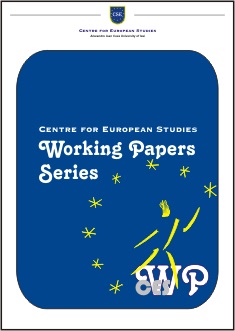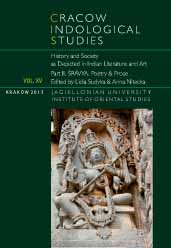Old Tamil Kings and Chieftains as Described in Sangam Literature
Author(s): Jaroslav Vacek / Language(s): English
/ Issue: 15/2013
Keywords: Tamil literature; Sangam literature; early Tamil history; old Tamil kings; old Tamil chieftains; lexical frequency in Sangam texts; formulas.
Old Tamil Sangam literature can offer some very concrete information about a number of local kings and chieftains (Pāri, Ōri, Āy, Naḷḷi, Pēkaṉ etc.) and occasionally also their relations with the three great dynasties Pāṇṭya, Cōḻa and Cēra. The three dynasties use special symbols, which are partly derived from nature: tiger (puli) – the emblem of the Cōḻa Kings; fish (mīṉ) – the symbol of the Pāṇṭyas. The Western Cēras use a ‘military’ symbol, viz. the bow (vil). Kings and chieftains (vēḷir) are referred to on various occasions; they fulfil various roles, among other things also that of ‘sponsors’ of the poets. References to chieftains and other ‘political’ figures in Sangam literature are made with regard to war and partly other social functions as can be seen in the standard formulas appearing with these figures.
The paper sums up some of the roles of the castes according to the Poruḷatikāram of the Tolkāppiyam grammar and then deals with the ‘positive’ attributes of kings and chieftains. For example, they possess strong or quick bows (val vil, 33x), long lances (neṭu vēl, 29x) or sharp lances (kūr vēl, 10x), (great) moving chariots (iyal tēr, 21x) or strong chariots (tēr vaṇ, 8x), and strong horses (mā vaṇ, 11x) or big horses (neṭu mā, 5x). Their hands are wide (taṭam kai, 46x) and liberal (kai vaṇ, 18x) and they perform victorious battles (vel pōr, 36x) and good battles (nal pōr, 7x). They have a reputation for liberality (vaṇ pukaḻ, 5x), in fact, they experience joy in liberality (vaṇ makiḻ, 14x). They enjoy excellence (cīr keḻu, 14x), abundant fame (urai cāl, 19x) or great fame (name) (peru peyar, 36x). There are also negative attributes. The paper will document some selected ‘qualifications’ of the ‘men of war’.
More...


